SAP Enterprise Asset Management
SAP Asset Analytics | SAP Asset Tracking | SAP EAM | SAP Field Service | SAP GIS | SAP Maintenance Management | SAP Mobile Asset Management
Filter By
Browse By
- SAP Analytics and AI
- SAP Application Development and Integration
- All SAP Application Development and Integration
- SAP ABAP
- SAP ABAP Development Tools
- SAP ABAP Test Cockpit
- SAP API Management
- SAP BAPI
- SAP Basis
- SAP BRF
- SAP Business Application Studio
- SAP CMS
- SAP Design Studio
- SAP Development Tools
- SAP DevOps
- SAP EAI
- SAP EDI
- SAP Extension Suite
- SAP Fiori
- SAP Fiori Elements
- SAP Integration Suite
- SAP Low Code Application Development
- SAP Low Code Automation
- SAP Netweaver
- SAP Release Management
- SAP UI5
- SAP Web Application Server
- SAP Web IDE
- SAP Business Process Management
- SAP Center of Excellence
- SAP CIO
- SAP Customer Experience
- SAP Data and Data Management
- All SAP Data and Data Management
- SAP BW
- SAP BW/4HANA
- SAP Crystal Reporting
- SAP Data Archiving
- SAP Data Center
- SAP Data Governance
- SAP Data Integration
- SAP Data Migration
- SAP Data Quality
- SAP Data Services
- SAP Data Strategy
- SAP Data Visualization
- SAP Data Warehouse Cloud
- SAP DMS
- SAP Document Control
- SAP EIM
- SAP ETL
- SAP ETL Tools
- SAP HANA
- SAP HANA Administration
- SAP HANA Deployment Infrastructure
- SAP HANA Studio
- SAP Master Data
- SAP Master Data Governance
- SAP MDM
- SAP Enterprise Architect
- SAP Enterprise Asset Management
- SAP ERP
- SAP Finance
- All SAP Finance
- SAP Accounting
- SAP AR AP
- SAP Asset Accounting
- SAP Billing Systems
- SAP BPC
- SAP BRIM
- SAP Cash Management
- SAP Central Finance
- SAP Controlling
- SAP COPA
- SAP Cost Center Accounting
- SAP e-invoicing
- SAP FICO
- SAP Finance Automation
- SAP Financial Closing Cockpit
- SAP Financial Consolidation
- SAP Financial Planning
- SAP FX Risk
- SAP General Ledger
- SAP Global Tax Management
- SAP Hyperion
- SAP Order to Cash
- SAP Payment Processing
- SAP Profitability Analysis
- SAP Rebate Management
- SAP S/4HANA Finance
- SAP Universal Journal
- SAP Governance Risk and Compliance
- SAP Human Capital Management
- SAP Intelligent Technologies
- SAP Platform and Technology
- All SAP Platform and Technology
- SAP Business Technology Platform
- SAP Cloud Connector
- SAP Cloud Integration Platform
- SAP Cloud Migration
- SAP Cloud Platform
- SAP Cloud Providers
- SAP Cloud Strategy
- SAP Container Platform
- SAP Digital Asset Management
- SAP Digital Integration Hub
- SAP Digital Signature
- SAP HANA Enterprise Cloud
- SAP HEC
- SAP Hyperscalers
- SAP Infrastructure
- SAP Messaging
- SAP Smart Forms
- SAP Quality and Testing
- SAP Security
- SAP Spend Management
- SAP Supply Chain Management
- All SAP Supply Chain Management
- SAP APO
- SAP Asset Management
- SAP Business Network
- SAP Digital Manufacturing Cloud
- SAP Digital Twin
- SAP EWM
- SAP IBP
- SAP Inventory Management
- SAP Label Printing
- SAP Logistics
- SAP Manufacturing
- SAP Manufacturing Automation
- SAP MES
- SAP MII
- SAP MM
- SAP MRO
- SAP MRP
- SAP Order Management
- SAP Plant Maintenance
- SAP PLM
- SAP Production Planning
- SAP S&OP
- SAP SD
- SAP SPM
- SAP Supply Chain Planning
- SAP Track and Trace
- SAP Transportation Management
- SAP System Administration
What is Enterprise Asset Management?
Enterprise Asset Management (EAM) in SAP focuses on managing and maintaining an organization’s assets throughout its lifecycle. It employs systematic approaches such as asset tracking, planning, maintenance, and analysis to ensure optimal asset utilization and performance.
What is Enterprise Asset Management?
Enterprise Asset Management (EAM) in SAP focuses on managing and maintaining an organization’s assets throughout its lifecycle. It employs systematic approaches such as asset tracking, planning, maintenance, and analysis to ensure optimal asset utilization and performance.
By leveraging advanced technologies such as IoT (Internet of Things) sensors, predictive analytics, and cloud-based platforms, Enterprise Asset Management (EAM) in SAP enables organizations to monitor asset health, schedule preventive maintenance, manage repairs, and make informed decisions on asset acquisition or disposal. This proactive and data-driven approach to asset management helps organizations minimize downtime, reduce costs, extend asset lifespan, and improve overall operational productivity.
SAP Enterprise Asset Management (EAM) empowers organizations to align their asset management best practices with their broader organizational goals and achieve sustainable competitive advantage.
How Does an EAM System Work?
As the landscape of Enterprise Asset Management (EAM) in SAP continues to evolve, traditional on-premise systems have given way to modern cloud-based solutions. This technological advancement brings advantages like increased data storage capacities, enhanced security measures, and seamless integration with complementary applications such as supply chain management systems, mobile workforce management systems, Internet of Things (IoT) sensor systems, GIS (geographic information systems), GPS, and various other applications. By leveraging cloud platforms, organizations can efficiently manage their assets and also benefit from scalability, flexibility, and accessibility to real-time information while optimizing their asset management processes and driving operational excellence. EAM involves the following steps:
- Collecting and storing asset data in the cloud, utilizing the cloud’s agility to centralize asset information and generate analytical insights.
- Using data to guide asset strategy and optimize productivity by leveraging ML and predictive analytics to assess risks.
- Proactively schedule and maintain inspections, prioritize critical assets to minimize downtime, and resolving issues.
- Extending EAM system capabilities to workers enables management of work orders, asset processes, remote tracking, and maintenance process management.
Why is Asset Management Important?
Asset management is crucial for organizations across industries as it enables them to optimize the use of physical assets while minimizing downtime and maximizing returns. It also helps mitigate risks by proactively addressing potential failures and ensuring asset reliability. Informed decision-making is facilitated by analyzing asset data, allowing organizations to strategically plan investments, optimize portfolios and support regulatory compliance and ensure adherence to standards and regulations. Overall, effective asset management enhances operational efficiency, reduces risks, supports decision-making, and leads to improved profitability and long-term success.
SAP Intelligent Asset Management
SAP offers SAP Intelligent Asset Management, a suite of solutions that “enables an organization to use sensor technologies and predictive analytics to improve asset health.” The four solutions and some of their capabilities include:
- SAP Asset Intelligence Network SAP: Asset Intelligence Network offers collaborative capabilities and automated equipment tracking and enables organizations to seamlessly connect with stakeholders across the asset lifecycle. By leveraging this network, businesses can effectively manage and maintain their assets while benefiting from real-time insights. The platform automates equipment tracking and streamlines asset management processes, enhances operational efficiency, and enables proactive decision-making regarding maintenance, repairs, and replacement. SAP Asset Intelligence Network empowers organizations to optimize their EAM strategies, improve asset performance, and drive operational excellence in a collaborative and automated environment.
- SAP Predictive Asset Insights: SAP Predictive Asset Insights provides a 360-degree view of organizational assets and leverages advanced predictive analytics to generate a comprehensive view of assets, including their condition, performance, and maintenance requirements. The 360-degree view allows for real-time asset monitoring and tracking, enabling proactive maintenance and optimized asset utilization. With advanced predictive analytics algorithms, the solution enables forecasting asset failures and finding potential issues before they occur. By harnessing the power of data and analytics, SAP Predictive Asset Insights empowers organizations to make data-driven decisions, reduce downtime, improve operational efficiency, and enhance the overall performance and reliability of their asset portfolio.
- SAP Mobile Asset Management: SAP Mobile Asset Management streamlines work order management and enhances asset maintenance processes. The solution enables efficient work order creation, assignment, and tracking, empowering field workers and other users to access and update critical asset information in real time through mobile devices. SAP Mobile Asset Management allows organizations to optimize resource allocation, improve response times, and ensure the timely completion of maintenance tasks. The cloud-based deployment provides seamless integration, enabling organizations to harness the benefits of advanced analytics, IoT sensors, and other complementary applications to enhance asset management practices.
- SAP Asset Strategy and Performance Management: SAP Asset Strategy and Performance Management optimizes asset performance and enhances maintenance strategies by leveraging asset information management and failure modes and effects analysis (FMEA). Asset information management allows to capture, store, and manage critical asset information, including technical specifications, maintenance history, and documentation. This centralized repository enables easy access to asset data, facilitating informed decision-making and streamlined maintenance processes. The failure modes and effects analysis (FMEA) module enable organizations to identify potential failure modes of assets, assess their potential impact, and develop appropriate preventive and corrective maintenance strategies. SAP Asset Strategy and Performance Management empowers organizations to maximize the value of their assets, reduce downtime, and enhance operational efficiency through effective asset information management and failure modes analysis.
Join SAPinsider to access opportunities for networking and engagement in the dynamic SAP ecosystem. As a member, you will have access to a wealth of valuable resources and content tailored to SAP technologies and best practices like the latest research reports, articles, webinars, and events that will keep you informed and ahead of the curve.
SAPinsider membership grants you exclusive access to in-depth analyses, expert insights, and practical guidance that will empower you to navigate the ever-evolving SAP landscape with ease. SAPinsider membership will enable you to remain one step ahead and harness the latest trends, innovations, and strategies to drive your own powerful digital transformations, optimize your SAP investments, and unlock business success.
90 results
-

Meet AssetHive at the SAP for Asset and Service Management Conference in Rome
Reading time: 1 mins
AssetHive is joining the SAP for Asset and Service Management Conference in Rome, October 8–9. We’ll be presenting a talk and hosting a roundtable discussion on intelligent work management and SAP EAM innovation. Come meet us and be part of the conversation!
-

- SAP Enterprise Asset Management
 Premium
Premium
Demo: Harmonising Asset Performance with SAP Intelligent Asset Management in Digital Supply Chain
SAP Intelligent Asset Management empowers organizations to optimize their asset performance, reduce downtime, and enhance decision-making through real-time data insights and predictive analytics. In an increasingly competitive landscape, businesses are challenged to maximize the value of their assets while minimizing costs and inefficiencies. SAP Intelligent Asset Management addresses these challenges by providing a comprehensive suite...…
-

- SAP Enterprise Asset Management
 Premium
Premium
Demo: Modernising ERP and Transactional Systems with Appian’s Agility Layer
Appian’s Agility Layer modernises ERP systems by overlaying them with agile, low-code applications and workflows. This approach enables rapid process automation on existing systems of record, delivering cost savings while you focus on your ongoing business transformation. A supplier onboarding example will showcase Appian’s AI-driven insights, native SAP integration, automation capabilities (fast low-code development, integration,...…
-
-

- SAP Enterprise Asset Management
 Premium
Premium
Demo: Boosting Asset Reliability: Data Quality Management for SAP EAM
Accurate asset data is the backbone of reliable operations. In this 15-minute live demo, discover how SimpleMDG’s Data Quality Management (DQM) feature helps SAP customers take control of equipment, functional location, and maintenance-related master data. Learn how asset-intensive organizations use SimpleMDG to identify gaps, enforce standards, and automate validations – ensuring clean, structured data for...…
-

- SAP Enterprise Asset Management
 Premium
Premium
Empowering Supply Chain, Spend, and Asset Management Evolution: Strategic Integration of Data and AI
As organisations navigate constant disruption, the need to evolve from siloed, efficiency-focused operations to intelligent, connected networks has never been more urgent. In this keynote, Rick Imber, Global Head of Supply Chain Domain Advisory at SAP, explores how forward-thinking businesses are entering the next phase of operational evolution—where data and AI are central to transforming...…
-

- SAP Enterprise Asset Management
 Premium
Premium
The Evolution of Master Data Governance and AI Driven Insights
Precision Drilling has enhanced its Enterprise Asset Management strategies through strengthened Master Data Governance and AI-driven initiatives, achieving operational efficiency and real-time data insights with SAP collaboration. Mastering SAP Premium Access Membership Required You must be a Mastering SAP Premium Access member to access this content.Join NowAlready a member? Log in here
-

- SAP Enterprise Asset Management
 Premium
Premium
From Assumptions to Action: Unlocking Asset Management with Data-Driven Insights
Precision Drilling's implementation of SAP S/4HANA in 2018 transformed its asset management strategy by establishing data governance, enhancing maintenance practices with real-time insights through SAP Analytics Cloud, and streamlining operations with mobile applications, ultimately driving digital transformation and operational efficiency. Mastering SAP Premium Access Membership Required You must be a Mastering SAP Premium Access member…
-
-

- SAP Enterprise Asset Management
 Premium
Premium
Simplifying Execution of Maintenance and Inspections with SAP Dynamic Forms
Following last year’s fully subscribed and top-rated session introducing SAP Dynamic Forms, hear directly from SAP’s Global Product Manager how SAP Dynamic Forms can support both simple and complex use cases, while simultaneously eliminating paper and non-interactive attachments. Whether they are for inspections, job safety, or to capture important operational data – forms are an...…
-

- SAP Enterprise Asset Management
 Premium
Premium
The Future of Asset Management – Closing the Loop Between Reliability and Operations
SAP’s Asset Management suite provides comprehensive tools to enhance asset performance, reduce maintenance costs, and manage risks through a seamless integration of various SAP solutions. Mastering SAP Premium Access Membership Required You must be a Mastering SAP Premium Access member to access this content.Join NowAlready a member? Log in here
-

- SAP Enterprise Asset Management
 Premium
Premium
Thinking Outside the ERP – The Key to Unlocking Supply Chain and Asset Management Alignment
SAP's AI-powered planning for MRO enhances equipment failure forecasting, spare parts optimisation, resource identification, and budget alignment, all while maintaining ERP integrity and delivering integrated results in 12 weeks. Mastering SAP Premium Access Membership Required You must be a Mastering SAP Premium Access member to access this content.Join NowAlready a member? Log in here
Become a Member
Unlimited access to thousands of resources for SAP-specific expertise that can only be found here.
Related Vendors
Your request has been successfully sent

